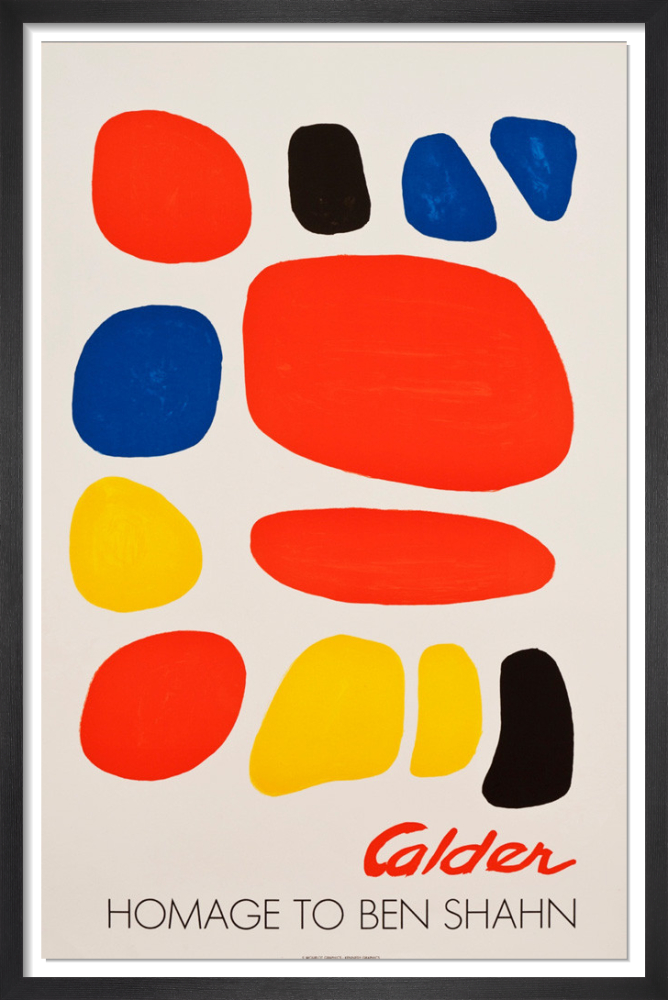L’Atelier Mourlot: Masters of twentieth-century lithography
Reading time: 3 mins
When Fernand Mourlot invited influential artists such as Braque and Picasso to his lithographic print studio in the late 1930s–1940s, he transformed the printing technique into a fine art practice. Discover the rich history of l’Atelier Mourlot through the artists that worked with the studio.

Founded in Paris in 1852 by Francois Mourlot, l’Atelier Mourlot began as a producer of fine wallpaper. In 1914, his son Jules expanded the business to produce illustrated books and posters. But it was under the direction of the founder’s grandson, Fernand Mourlot in the 1930s, that leading artists were invited to the studio to collaborate on traditional limestone lithography. For painters like Calder, Dufy, Léger, Chagall, and Braque, the medium provided an exciting new form of expression. Closely assisted by Mourlot’s artisan-printers, artists were encouraged to work directly on the limestones creating original, handcrafted lithograph editions and exhibition posters.

Under the influence of Fernand Mourlot, the art poster was born. Displayed on Europe’s bustling city streets, these works could reach a wider audience than offered by galleries. Quickly recognising this opportunity, many artists spent considerable time and energy on their poster designs. Most famously, Picasso, who became obsessed with the medium, produced nearly 400 lithographs over 20 years.
In 1967, Fernand’s son, Jacques Mourlot, opened a new print shop on Bank Street in New York. This branch of the master printers furthered the pioneering work of the Parisian studio through collaboration with American artists. While the studio closed in 1999, today Fernand’s grandson Eric Mourlot continues the legacy of the print shop through Galerie Mourlot.
Picasso met Fernand Mourlot in October 1945 after much encouragement from Georges Braque and Henri Matisse. As they predicted, Picasso soon became obsessed with the possibilities of lithography and amazed the Mourlot team with his artistic audacity and talent. Asked by Mourlot how many assistants Picasso needed, his answer was, ‘None. I’ll do everything myself!’. He proceeded to make many innovative experiments on the limestones. Fernand Mourlot characterised Picasso as someone who ‘looked...listened...did the opposite of what he had learnt’. He would stay at the Mourlot print workshop for several months at a time, 12 hours a day, and over the course of 20 years he created nearly 400 lithographs.

Miro first began to collaborate with Atelier Mourlot on a volume of his Surrealist compositions in 1948. He soon became drawn to the varied artistic opportunities of lithography, and at the encouragement of Georges Braque began to spend much of his time working on the stones of the Parisian Mourlot studio. Miro enjoyed the variety and quality offered by the medium and produced countless original lithographs. Fernand Mourlot observed Miro as a quiet, calm character who worked steadily on his prints – never rushing. The result was over 1000 lithographic print editions, many of which survive today, and each a testament to the careful hand of this dedicated artist.
On his return from America, Marc Chagall met with Fernand Mourlot and began an artistic partnership with the workshop’s Master Printer, Charles Sorlier, that would last for 35 years. Chagall, Mourlot, and Sorlier grew very close in their collaborative artistic efforts and Sorlier claimed to owe his much-lauded talent to Chagall, saying that a small fragment of the artist’s genius passed to him during their time working together. The universe of Chagall’s work is often noted as having a fairytale element. This story about Sorlier acquiring a little of Chagall’s genius, as if by magic, fits right in.
Georges Braque worked regularly with Mourlot between 1942 and 1945 and also encouraged his artistic peers to branch out and try lithography. It was at Braque’s insistence, that Picasso and Miro came to the Mourlot studio. Braque was known for arriving at the print shop on a contraption that was part tricycle and part bulldozer, having crossed the entire city just to make a few slight adjustments to his lithographs. He loved lithography because it fitted so well with Cubism – the avant-garde movement he had co-founded with Picasso. The Cubist process of introducing each colour separately allowed Braque to recreate the layers of collage in his prints.
Jean Cocteau (1889-1963) was a French avant-garde poet, playwright and artist. Associated with both Dada and Surrealism, he was one of the most influential creative figures in Paris. Cocteau famously said of his artwork, ‘Poets don’t draw. They unravel their handwriting and then tie it up again, but differently.’ One of many celebrated artists to create lithographs at Atelier Mourlot, Cocteau was very fond of the studio. In 1955, he wrote a poem dedicated to the famous print shop; ‘Walls have ears, they even have mouths, Mourlot posters, presents to you one of their songs, one of their cries.’
Alexander Calder (1898-1976) was an American artist whose radical, kinetic approach to sculpture revolutionised the medium. Most famous for his ‘mobiles’, Calder’s work explores the relationship between form and movement. Bold primary colours complete the iconography of his work. Calder was also one of many prominent artists to collaborate with the New York branch of Atelier Mourlot, his whimsical designs featured on lithographic posters promoting the new studio.




































